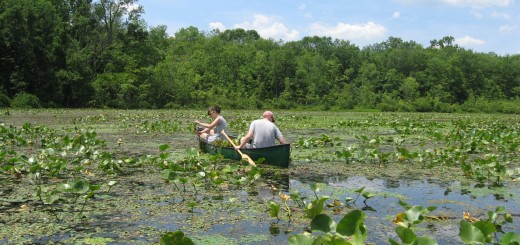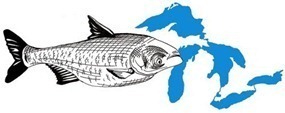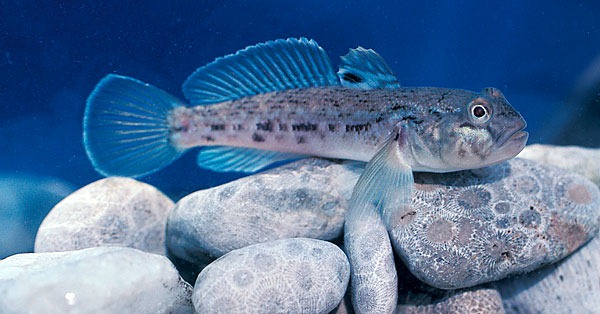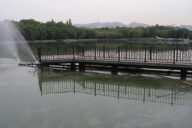Bighead carp added to injurious wildlife list
0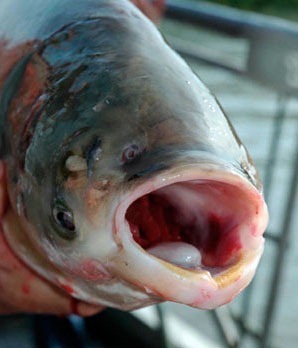 As part of an ongoing effort to prevent bighead carp (Hypophthalmichthys nobilis), one of several species of Asian carp, from invading the Great Lakes, the U.S. Fish & Wildlife Service published a final rule in late March that adds this invasive specie to the injurious wildlife list.
As part of an ongoing effort to prevent bighead carp (Hypophthalmichthys nobilis), one of several species of Asian carp, from invading the Great Lakes, the U.S. Fish & Wildlife Service published a final rule in late March that adds this invasive specie to the injurious wildlife list.
The infiltration of bighead carp into the Great Lakes has the potential to cause irreversible harm to the Great Lakes region’s ecosystems and billions of dollars in revenue loss for Great Lakes-dependent industries.
According an article written by Douglas Belkin of the Wall Street Journal, “scientists fear the fish [Asian carp] could decimate the $7 billion sport fishing industry on the Great Lakes and permanently damage the ecosystem of the largest body of fresh water in the world.”
Bighead carp are indigenous to large rivers in Eastern Asia. Their native domiciles, which have climates similar to that of the Great Lakes, extend from southern China to the Amur River system, which forms the northern border of China and southern border of Russia. Bighead carp can reach weights of up to 100 pounds and grow longer than four feet.
Asian carp were imported from eastern China into the United States in the 1970s. They were first released in Arkansas with the goal of improving water quality conditions in aquaculture ponds and sewage treatment lagoons. Bighead, and other Asian carp, have since spread through the Mississippi River basin and been discovered as far north as Lake Pepin in Minnesota.
The sheer size of bighead carp, and its insatiable appetite, is part of the reason its spread to the Great Lakes could be so detrimental. According to the U.S. Environmental Protection Agency website, Asian carp pose a serious threat to Great Lakes ecosystems “due to their large size, ravenous appetites, and rapid rate of reproduction.”
Researchers expect, according to the U.S. EPA website, that the presence of the carp in the Great Lakes would disrupt the food chain that supports the region’s native fish.
The injurious wildlife listing bans the importation and transportation of live bighead carp, viable eggs, or hybrids of the species across state lines. Exceptions will only be made by permit for educational, medical, or scientific purposes.
Under the Lacey Act, an injurious wildlife listing means a species has been demonstrated to be harmful to either the health and welfare of humans, interests of forestry, agriculture, or horticulture, or the welfare and survival of wildlife or the resources that wildlife depend upon.
Adding Asian carp to the injurious wildlife list is certainly not the first attempt at stopping the spread of the species. In 2002, the Army Corps of Engineers built a $9 million electric barrier 25 miles from Lake Michigan. Despite the construction of this highly expensive blockade, there have been several Asian carp findings in waters on its wrong side.
Despite the efforts of lawmakers, government agencies, and environmental groups, Asian carp are resiliently finding ways to spread and proliferate. New efforts to keep their populations at bay have even resorted to culinary tactics. Recipes for transforming Asian carp into delicious meals are being spread rapidly across in the Internet in an effort to increase their consumption. Bighead carp are even being marketed as a ‘Silverfin’ on some restaurant menus.
While the efforts to halt the spread of Asian carp are numerous, they seem to thus far be ultimately ineffective. As new plans are unveiled and implemented, Asian carp populations continue to rise and spread to new places. The long-term effects of Asian carp proliferation, while predicted be highly negative, will only be revealed by time.
Asian Carp and the Great Lakes [U.S. Environmental Protection Agency] Injurious Wildlife A Summary of the Injurious Provisions of the Lacey Act (18 U.S.C. 42; 50 CFR 16) [U.S. Fish & Wildlife Service] Bighead Carp joins Federal List of Injurious Wildlife [The Epoch Times] Asian Carp Could Hurt Boating, Fishing Industry In Great Lakes [The Wall Street Journal] Bighead Carp Added to Federal List of Injurious Wildlife [Gardennews.biz] New Weapons Against Asian Carp: Knife and Fork [Live Science] Asian Carp: If You Can’t Beat ‘Em, Eat ‘Em [Newser]
Image Credit: T. Lawrence, Great Lakes Fishery Management




